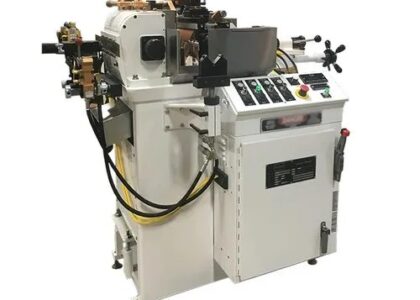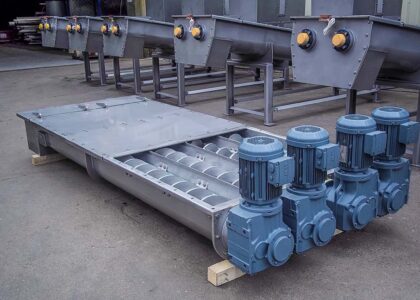Consumers are increasingly demanding sustainable products and packaging. By adopting carbon-negative packaging, companies can enhance their brand image, attract environmentally conscious consumers, and gain a competitive edge in the market.
The Carbon-negative Packaging Market is projected to experience significant growth. It is estimated to reach a value of US$ 77.0 Million in 2023 and is projected to increase to US$ 145.0 Million by 2033. The sales of carbon-negative packaging are predicted to expand at a substantial compound annual growth rate (CAGR) of 6.5% during the forecast period.
A promising solution has emerged like carbon-negative packaging as the negative impact of traditional packaging materials on the environment becomes apparent. This innovative approach offers the potential to not only reduce carbon emissions but also remove existing carbon from the atmosphere.
Carbon-negative packaging directly addresses the urgent need to combat climate change. By reducing carbon emissions and actively removing CO2 from the atmosphere, it contributes to global efforts to limit global warming and mitigate the adverse effects of greenhouse gases.
Get Exclusive Free Sample Copy of the Report: https://www.futuremarketinsights.com/reports/sample/rep-gb-17280
Market Drivers:
- Environmental Concerns: Growing awareness and concern about climate change and carbon emissions drive the adoption of carbon-negative packaging. Companies and consumers are seeking eco-friendly alternatives to reduce their carbon footprint.
- Regulatory Support: Government regulations and policies promoting sustainable and low-carbon packaging options encourage businesses to embrace carbon-negative packaging solutions.
- Consumer Demand: As consumers increasingly prioritize eco-friendly and sustainable products, carbon-negative packaging has gained popularity as a way to reduce carbon emissions and environmental impact.
- Corporate Social Responsibility: Many companies are adopting carbon-negative packaging as part of their corporate social responsibility (CSR) initiatives, aligning with sustainability goals.
- Innovation in Materials: Advances in materials and packaging technology have led to the development of carbon-negative materials and packaging designs, making them more competitive.
Key Benefits
Climate Change Mitigation: The utilization of carbon-negative packaging materials emerges as a pivotal player in addressing climate change concerns. Actively extracting carbon dioxide from the atmosphere aids in stabilizing and reducing greenhouse gas concentrations, thereby fostering a healthier planet and contributing to the ongoing fight against climate change.
Carbon Footprint Mitigation: Packaging can effectively mitigate its carbon footprint by incorporating carbon-negative materials and methods. This proactive approach not only combats climate change but also aligns with global initiatives to attain carbon neutrality, making a meaningful contribution to environmental preservation.
Environmental and Social Positivity: Carbon-negative packaging goes beyond carbon footprint reduction; it embodies environmental stewardship and sustainability. By promoting the use of renewable resources, engaging in local sourcing, and minimizing pollution and waste, it not only supports ecological well-being but also brings positive social impact to local communities.
Ready to Learn About Our Approach? Explore Our Methodology: https://www.futuremarketinsights.com/request-report-methodology/rep-gb-17280
Regional Analysis
Analyzing the regional landscape, North America has witnessed significant adoption of carbon-negative packaging due to its commitment to sustainability, strict environmental regulations, and growing consumer awareness. The well-established food and beverage industry in the region has played a crucial role in driving the usage of carbon-negative packaging.
Europe, known for its sustainability efforts and ambitious emission reduction goals, has been at the forefront of carbon-negative packaging usage. The food and beverage industry in Europe has been a key driver, with consumers prioritizing eco-friendly packaging and governments implementing strict regulations and extended producer responsibility initiatives.
In the Asia Pacific region, there are a few factors that have led to the significant adoption of sustainable packaging solutions which include:
- A combination of factors such as government environmental regulations.
- A growing middle class with increased purchasing power.
- Rising environmental consciousness.
Governments in this region have introduced environmental rules and legislation that support sustainable packaging practices and encourage research and development in eco-friendly materials and technologies.
Latest Developments:
- Loop Industries, a leading producer of innovative plastic upcycling technology, has formed a strategic alliance with SK Global Chemical, a subsidiary of SK Group.
- Novamont, an Italian bioplastic and biochemicals company, collaborated with UPM Biofuels, a developer of advanced biofuels, to create sustainable and biodegradable materials for packaging applications.
- Danimer Scientific, a global provider of speciality films and packaging solutions, has partnered with Plastic Suppliers, a renowned maker of biodegradable and compostable bioplastics.
Key Companies Profiled:
- Phillips Carbon Black Limited
- Birla Carbon USA, Inc.
- Continental Carbon India Limited
- Cabot Corporation
- Tokai Carbon Group (Cancarb)
- Sealed Air Corporation
- Pregis Corporation
- DS Smith Plc
- Achilles Corporation
- Delphon Industries, LLC
- Smurfit Kappa Group
- Storopack Hans Reichenecker GmbH
- Desco Industries Inc.
- Nefab Group
- Teknis Limited, Elcom (United Kingdom) Ltd.
- GWP Group Limited
- International Plastics Inc.
- AUER Packaging GmbH
- Pure-Stat Engineered Technologies, Inc.
- Protective Packaging Corporation
- Key Segments
Industry Segmentation:
By Packaging Material Outlook:
- Bioplastics
- Engineered Wood Products
- Green Concrete
- Algae-Based Materials
- Others
By End-User Outlook:
- Food & Beverages
- Pharmaceutical and Healthcare
- Personal Care & Cosmetics
- Others
By Region:
- North America
- Latin America
- Western Europe
- Eastern Europe
- Asia Pacific Excluding Japan (APEJ)
- Japan
- The Middle East & Africa (MEA)
Purchase this report to Uncover Segment-specific Information, Identify Key Trends, Drivers, and Challenges: https://www.futuremarketinsights.com/checkout/17280
About Future Market Insights (FMI)
Future Market Insights, Inc. (ESOMAR certified, recipient of the Stevie Award, and a member of the Greater New York Chamber of Commerce) offers profound insights into the driving factors that are boosting demand in the market. FMI stands as the leading global provider of market intelligence, advisory services, consulting, and events for the Packaging, Food and Beverage, Consumer, Technology, Healthcare, Industrial, and Chemicals markets. With a vast team of over 5000 analysts worldwide, FMI provides global, regional, and local expertise on diverse domains and industry trends across more than 110 countries.
Contact Us:
Future Market Insights Inc.
Christiana Corporate, 200 Continental Drive,
Suite 401, Newark, Delaware – 19713, USA
T: +1-845-579-5705
For Sales Enquiries: sales@futuremarketinsights.com
Website: https://www.futuremarketinsights.com
LinkedIn| Twitter| Blogs | YouTube





